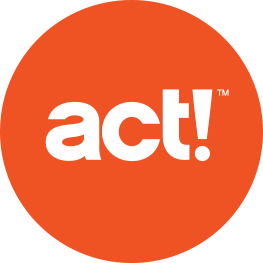Personal Calendar
Personal Calendar Configuration
Welcome to Link2Calendar, an online tool for sharing your Act! calendar online with those people trying to book your time. With one click, your customers can see your availability, and provide them a convenient way to pick the earliest opportunity you both can meet. You get alerted immediately of the new appointment and the customer receives an invite for their calendar.
Before using, please make sure that you have completed Act! Web API Settings since Link2Calendar works directly with your Act! database to submit booking requests.
To get started, please go to Link2Calendar from the main menu.
In this article we will discuss how to configure your personal calendar.
First Time Setup Guide
Our setup guide can help you go through the necessary steps to configure and publish your calendar.
Read more...
General Tab
This tab contains general settings for your calendar page as well as your calendar link to share with others.
Status
Determine whether to publish your calendar. If disabled, your calendar URL will not be accessible for booking.
Custom URL
You can customize your calendar URL by entering a short identifier here which will generate a unique URL which is easy to read and remember.
You could click the [Validate] button to check if the specified indentifier is not yet taken.
Header Logo
Select a logo to be displayed on the header of the online appointment booking page.
Introductory Text
You can replace the default introductory text which is displayed on top of your booking page.
Closing Text
The Closing text will be displayed in the answer page after someone books an event with you.
This memo field does not support special formatting or HTML code.
Default Calendar Display
Link2Calendar provides both daily and weekly display of your availability. This option allows you to choose which display to use by default when the page is opened.
Show Welcome Dialog If enabled, a welcome dialog containing a short instruction and calendar's timezone will be displayed when viewing the calendar page.
Appointment Tab
This tab allows you to configure settings related to the details of appointments.
Time Slot Your daily calendar is divided into "slots", each with the specified duration in minutes (30-minutes is recommended). For example, if the slot is set to 30 minutes, a visitor will be able to choose to book at 9am, 9:30am, 10am, and so on.
Align Slot Time To When specified, this will be used to align when your first slot starts. If not specified, your slot will align to the start time of your first available day in the week.
Meeting Duration
Meeting duration is self evident, but should reflect the standard phone call duration (30-minutes/1-slot is recommended).
If you select more than one slot, it may limit the number of bookable slots available in a day for a visitor to choose from,
and imply to them you're committing to that time duration.
For instance, it may be onerous to commit to a 60-minute call with everyone that books an appointment with you,
and impractical when you consider it will limit others from booking times with you in the same day.
Extended Meeting
If checked, this will allow visitors to book up multiple consecutive time blocks up to the specified value.
For example, if your time slot is 30 minutes and you select 90 minutes extended duration,
a visitor will be able to book a 30, 60, or 90-minute appointment time.
Activity Types
List of activity types people can choose from when booking for a time. The selected activity type will be reflected
to Act! when a booking is created.
Location
Location is useful for the ICS file, when created in Outlook which often requires a location, and might fail to save the appointment without one.
Priority Select priority to assign when appointment is created on your Act! Calendar. You could also tick "Allow setting priority while booking" to allow visitor to modify this priority when booking.
Required Fields
Choose among the available sign-up fields which you require to be filled in when people request a booking.
Publishing Your Calendar
When you are ready to publish your calendar, look for Your Calendar URL on top of the page. The URL field is the link you'll publish in your email signature, or on your websites or social media.
Since the URL field rarely change, you could use the Status toggle any time you want to unpublish the calendar and prevent people from booking an appointment.
In the next chapter we will discuss on further configuring your availability.
^^ Last revised: 2023.03.14
